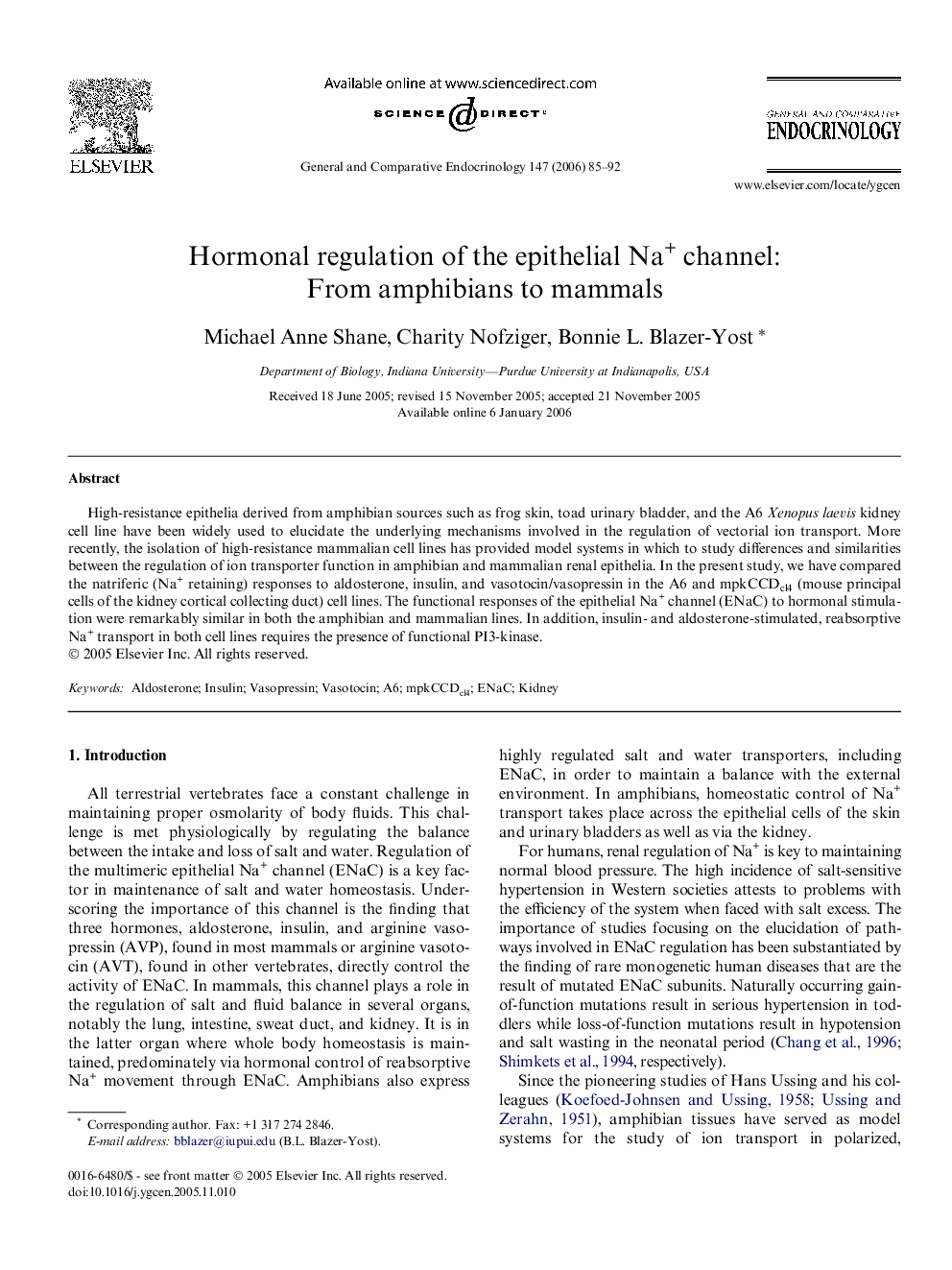| Article ID | Journal | Published Year | Pages | File Type |
|---|---|---|---|---|
| 2802341 | General and Comparative Endocrinology | 2006 | 8 Pages |
High-resistance epithelia derived from amphibian sources such as frog skin, toad urinary bladder, and the A6 Xenopus laevis kidney cell line have been widely used to elucidate the underlying mechanisms involved in the regulation of vectorial ion transport. More recently, the isolation of high-resistance mammalian cell lines has provided model systems in which to study differences and similarities between the regulation of ion transporter function in amphibian and mammalian renal epithelia. In the present study, we have compared the natriferic (Na+ retaining) responses to aldosterone, insulin, and vasotocin/vasopressin in the A6 and mpkCCDcl4 (mouse principal cells of the kidney cortical collecting duct) cell lines. The functional responses of the epithelial Na+ channel (ENaC) to hormonal stimulation were remarkably similar in both the amphibian and mammalian lines. In addition, insulin- and aldosterone-stimulated, reabsorptive Na+ transport in both cell lines requires the presence of functional PI3-kinase.
